The Children of Nicaragua
Smiles and Suffering
by Christoph Grandt, Managua
(published in the newspaper Central America Weekly)
A trip through Nicaragua is a trip followed by
thousands of children's smiles. However, many of them currently live in conditions that are utterly unacceptable.
They are being maltreated or abused within their own families (beating children is
unfortunately a widespread habit in this country), or they have to work hard since tender
age in order to earn their living. For UNICEF, the greatest advance in Nicaragua has been
the implementation of the Code of Childhood and Adolescence in November 1998, finally
determining dignity, protection, and rights of children and adolescents. This being an
important step forward, much is left to be done, as the following pictures show.
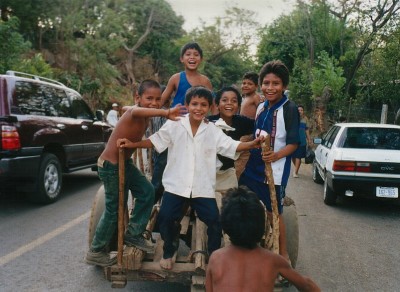
Nicaragua is a country of young people: 53% of the population is
less than 18 years old. The average age is 16.1 (UNICEF 1996). More than half of the
families have between 5 and 7 members, and nearly one third between 8
to 11.
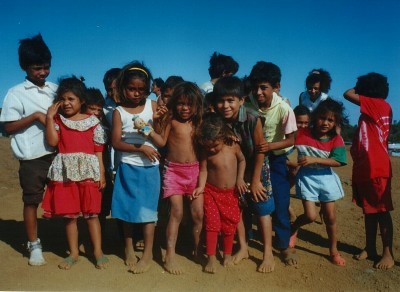
Many who have lost their homes during "Hurricane Mitch"
are still living in hot and dusty "Tierra Prometida" ("Promised
Land"), some 30 kilometers east of Managua in miserable conditions. And this is not
an exception: Only 62% of Nicaragua's children has access to drinking water and only 35%
to decent sanitary installations (UNICEF 1997).
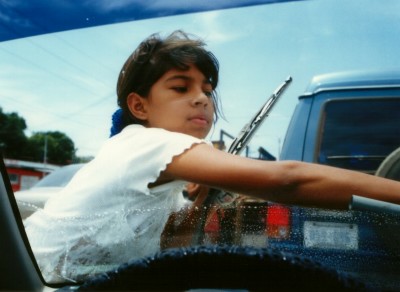
»Studies come first, Work comes later« says a government slogan
disseminated through television. However, the net percentage of children
attending
primary school is only 73% (UNESCO 1998), which is a consequence of the widespread child
work that prevents children from completing primary school.
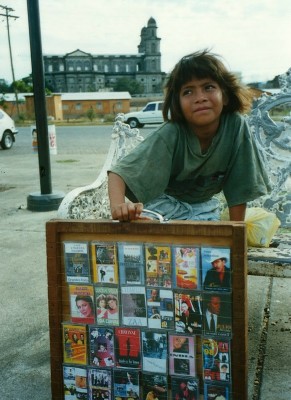
10 Córdobas (US$0.85) profit for each cassette is a lot, but
convincing potential clients is hard work. Recently she has given up the cassette business
and is now selling cheap plastic toys and balloons, as hundreds of children do at the
"Malecón", at the shores of Lake Managua.

»Children have the right to dignity as human
beings« tells us the
Code of Childhood. However, this boy will continue washing cars with his dirty cloth, and eating
leftovers from people who can spend 30 Córdobas (US$2.5) for a roasted chicken.
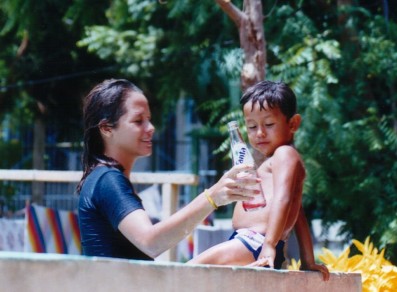
An adolescent girl playing with her little brother? No. She's a
young mother with her four-year-old son. A touching and very common picture in Nicaraguan
society: 21% of all newborn children have adolescents as their mothers (Proyecto Dos
Generaciones 1996), partly due to near inexistant sexual education.
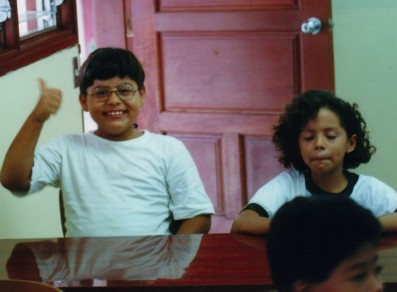
Those who have the advantage to be enrolled in a private school are
the lucky ones. It is them who will determine the future of Nicaragua. On the other hand,
only 31% of the young Nicaraguans terminate fifth grade (UNICEF 1998), and
illiteracy with adults is no less than 24% (UNICEF 1995).
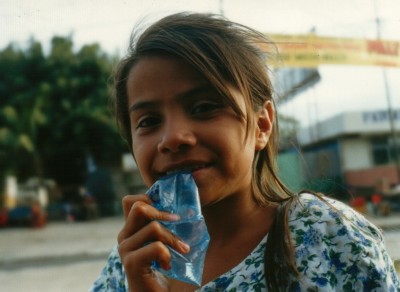
Girls like her already have to take existential responsibilities.
The mother has died, and it is the child who decides to invert her meager savings into a
small business selling water on the streets of Managua.

They have to spend 5 Córdobas for a tin of glue. They live
on the
streets of Managua together with some 15.000 children between 7 y 14
years of age. Ten times
higher is the number of those who, although having a place to live, are living depending
on survival strategies (UNICEF 1991).

From her 16th birthday onwards she will be a Nicaraguan citizen
having ample political rights. However, in her house there is not even a desk where to put
her birthday cake. And where to do school homework under these conditions? Many years ago
she dropped out of school; since that time her only capital is her beauty - an
ephemeral advantage.
Christoph Grandt, May 1999
Home
|